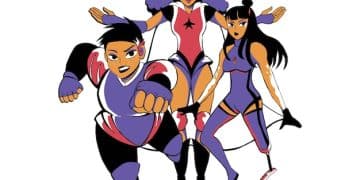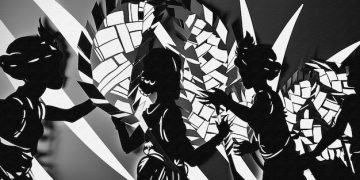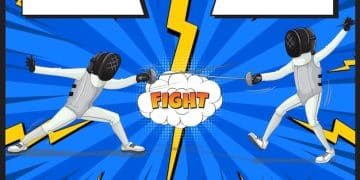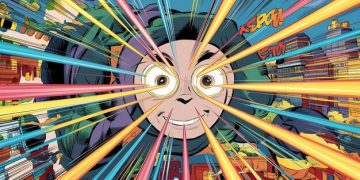Shonen Jump’s One-Shot Wonders: Predicting the Next Big Manga Series
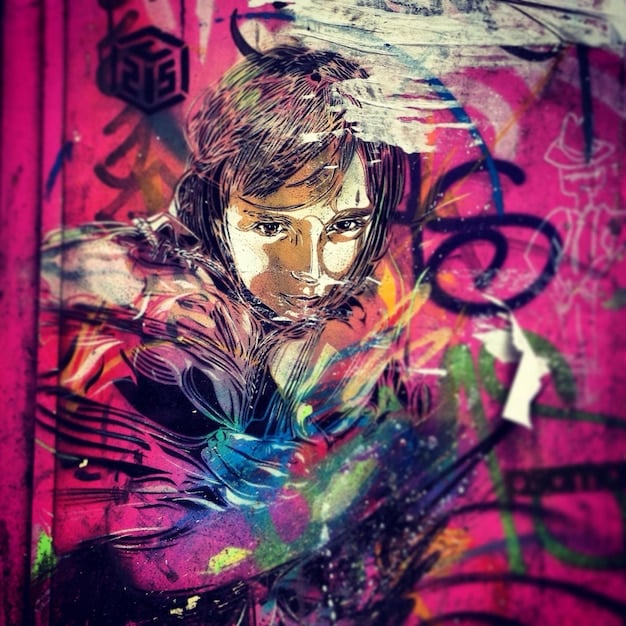
Shonen Jump’s One-shot Wonders: Spotting the Next Big Series Before It Launches explores how one-shot manga can serve as incubators for future hit series, highlighting successful examples and offering insights into identifying promising new manga content. Investigating emerging trends, talented creators, and the potential for these single chapters to evolve into massive franchises.
Have you ever wondered which one-shot manga in Shonen Jump’s One-Shot Wonders: Spotting the Next Big Series Before It Launches could be the next big thing? One-shots are often a glimpse into the creative minds of manga artists, showcasing unique concepts and storytelling styles that might just capture the hearts of millions.
The Allure of Shonen Jump’s One-Shot Manga
Shonen Jump, the legendary manga anthology, is renowned for launching some of the most successful manga series in history. But hidden among the ongoing sagas lie the one-shot manga, self-contained stories that offer a unique snapshot of an artist’s talent. These one-shots often serve as a testing ground for new ideas, characters, and worlds, making them fertile ground for potential future hits.
Exploring the world of Shonen Jump’s one-shots is like prospecting for gold. While not every one-shot will strike gold, the potential for discovering the next big thing is always there. Let’s look deeper into why these short stories hold such significant value.
Creative Freedom and Innovation
One of the key benefits of one-shots is the creative freedom they afford to manga artists. Unlike serialized works, where the story must adhere to a larger narrative, one-shots allow artists to experiment with unconventional themes, unique character designs, and innovative storytelling techniques.
This freedom allows them to push boundaries and explore untested waters, resulting in manga that feels fresh and original. Readers are drawn to this originality, as it offers a break from the familiar tropes and clichés often found in long-running series.
- Unconventional Concepts: One-shots can introduce unusual settings, premises, and themes that might be too risky for a full-fledged series.
- Character Design: Artists can experiment with character designs that are distinct and memorable, helping the one-shot stand out.
- Storytelling Techniques: One-shots provide an opportunity to experiment with narrative structure, pacing, and visual storytelling.
The focus on creativity can result in truly memorable narratives. It’s this innovation that often sets these one-shots apart and makes them potential candidates for expansion into longer series.

Identifying Promising One-Shot Concepts
So, what makes a one-shot stand out as a potential candidate for a full series? Identifying a promising one-shot concept involves looking beyond the art and characters to assess the story’s overall potential.
The key is to examine various elements to determine if the one-shot has the ‘it’ factor – the potential to capture a large audience and sustain their interest over time. Here are some factors worth considering.
Engaging Premise and World-Building
An engaging premise is crucial for capturing readers’ attention. The one-shot should introduce a unique concept or conflict that immediately piques the reader’s curiosity. In addition to a great premise, the depth and consistency of the world-building play a significant role. A well-defined world with its own rules, history, and cultures provides a rich setting that can support an extended series.
Compelling and Relatable Characters
Characters are the heart of any good story, and one-shots are no exception. The most promising one-shots feature characters that are well-developed, even within the limited page count. Their motivations, flaws, and relationships should be clearly defined. If the audience connects emotionally with the characters, they’re more likely to want to see their stories continue.
- Unique Backstories: Giving characters detailed and interesting backstories can enrich the narrative and create potential plot threads.
- Clear Motivations: Understanding what drives the characters makes their actions more meaningful.
- Emotional Connection: The ability to evoke empathy or sympathy in readers can create a strong and lasting bond.
Ultimately, it’s the combination of an engaging premise and likable characters that will set a one-shot apart and make it a prime candidate for expansion.
Successful One-Shots That Became Big Series
History is filled with examples of one-shot manga that went on to become major hits. These success stories provide valuable insights into the traits and elements that contribute to a one-shot’s potential. Examining these case studies can offer aspiring artists and fans alike can learn what to look for in a potential hit.
Here, we will explore some notable examples of one-shots that successfully made the transition to full-fledged series, examining what made them stand out and how they captured the attention of both readers and editors.
“Naruto” by Masashi Kishimoto
Before Naruto became a global phenomenon, it started as a one-shot published in Akamaru Jump in 1997. The one-shot introduced the character of Naruto Uzumaki and his dreams of becoming the greatest ninja. The one-shot showcased Kishimoto’s dynamic art style, his ability to balance humor and action, and the emotional depth of the characters.
“One Piece” by Eiichiro Oda
Eiichiro Oda’s iconic pirate adventure series, “One Piece,” had its origins in a one-shot titled “Romance Dawn,” published in 1996. This early version of the story introduced the character of Monkey D. Luffy and his quest to become the King of the Pirates. “Romance Dawn” captivated readers with its swashbuckling adventure, quirky characters, and a sense of boundless possibility.

Analyzing Current Trends in Shonen Jump
Keeping an eye on current trends in Shonen Jump is crucial for identifying potential one-shot breakouts. The popularity of certain genres, themes, and character archetypes can provide valuable insight into what resonates with readers at any given time.
Staying updated on these trends can help spot one-shots that tap into the zeitgeist and have a higher chance of gaining traction and capturing the audience’s imagination.
Fantasy and Isekai
The fantasy and isekai genres continue to be popular among manga readers. Stories about ordinary people being transported to magical worlds, with epic adventures and fantastical creatures, are always a hit. One-shots that offer fresh twists on these familiar tropes often stand out.
Consider this genre to spot unique concepts and innovative world-building within these one-shots.
Action and Adventure
Action and adventure remain cornerstones of Shonen Jump. Series with thrilling combat, high stakes, and dynamic characters are always in demand. One-shots that showcase innovative fight choreography, unique power systems, and compelling character arcs often grab attention.
- Innovative Fight Choreography: Unique and visually exciting action sequences.
- Unique Power Systems: Creative and well-defined power systems add depth.
- Compelling Character Arcs: Develop characters facing challenges.
Finding one-shots that bring something fresh to action and adventure series can become the next big hit.
The Role of Editors and Reader Feedback
While identifying promising one-shots is a talent, the role of editors and reader feedback cannot be overstated. Editors play a crucial role in guiding and shaping the creative vision of manga artists.
Feedback from readers, whether through surveys, comments, or social media, provides valuable insight into what resonates with the audience. The combination of editorial insight and audience response can help determine which one-shots have the potential to become successful series.
The Editor’s Perspective
Manga editors act as mentors, collaborators, and gatekeepers. They provide artists with guidance on story structure, character development, and pacing. Editors help artists refine their ideas, identify weaknesses, and hone their storytelling skills.
The editor’s unique experience provides artists valuable insight whether or not the one-shot manga is worth expanding or not.
The Importance of Reader Engagement
In today’s digital age, reader feedback is more accessible than ever. Online platforms, social media, and reader surveys provide manga creators with direct access to their audience’s thoughts and opinions. Positive feedback can provide a clear signal that a one-shot concept has struck a chord with readers.
- Online Feedback: Gathering the audience’s thoughts through online comments and reviews.
- Social Media: Measuring a one-shot’s popularity through social media platforms.
- Reader Surveys: Collecting structured data on audience preferences.
Being attentive to reader feedback, especially on recent one-shot manga and series, can impact the series’ growth and popularity.
Tips for Aspiring Manga Creators
For aspiring manga creators looking to create the next big hit one-shot, understanding the key elements that make a one-shot successful is essential. By focusing on crafting engaging stories, developing well-rounded characters, and staying true to their unique vision, creators can increase their chances of seeing their one-shot turn into a full-fledged series.
Here are some simple tips to help create the next breakout one-shot.
Focus on Originality
In a saturated market, originality is key. Don’t be afraid to experiment with unconventional ideas, unique themes, and distinct storytelling styles. Aim to create something that stands out and offers readers a fresh perspective. Be true to your vision, and don’t be afraid to take risks.
Develop Compelling Characters
Characters are the heart of any good story. Invest time in creating well-developed characters with clear motivations, relatable flaws, and compelling backstories. Make sure your characters are memorable and evoke emotional connection.
Embrace Feedback
Be open to feedback from editors, fellow artists, and readers. Constructive criticism can help you identify weaknesses in your work and refine your storytelling skills. Use feedback as an opportunity to grow and improve as a creator.
| Key Element | Brief Description |
|---|---|
| 💡 Originality | Unique concepts, themes, and storytelling. |
| 🧑🤝🧑 Characters | Well-developed, relatable, and memorable characters. |
| 🌍 World-Building | Detailed, consistent, and engaging world. |
| 📣 Audience | Positive feedback and engagement. |
Frequently Asked Questions
Why are one-shot manga important in Shonen Jump?
▼
One-shot manga serve as a testing ground for new ideas and talent. They provide a snapshot of fresh concepts, unique characters, and innovative storytelling styles that might become full series.
What makes a one-shot concept promising?
▼
A promising one-shot has an engaging premise, compelling characters, and a well-built world. These elements capture readers and sustain their interest, indicating the potential for a series.
Can you name any one-shot manga that became a big series?
▼
Yes, Naruto by Masashi Kishimoto and One Piece by Eiichiro Oda both started as one-shots. Their initial stories captivated readers and demonstrated the potential for expansive narratives.
What are the current trends in Shonen Jump?
▼
Currently, fantasy and isekai genres remain popular, along with action and adventure series. One-shots that offer innovative twists on these familiar themes tend to stand out.
Are editor influence and reader feedback important?
▼
Editors guide and shape the creative vision of manga artists, offering insight on story structure and character development. Reader feedback helps determine what resonates with the audience.
Conclusion
Ultimately, Shonen Jump’s One-Shot Wonders: Spotting the Next Big Series Before It Launches involves recognizing the unique potential within these initial offerings. By understanding the elements that contribute to a successful one-shot and staying attuned to current trends and reader feedback, fans and creators alike can identify and nurture the next big manga series.
